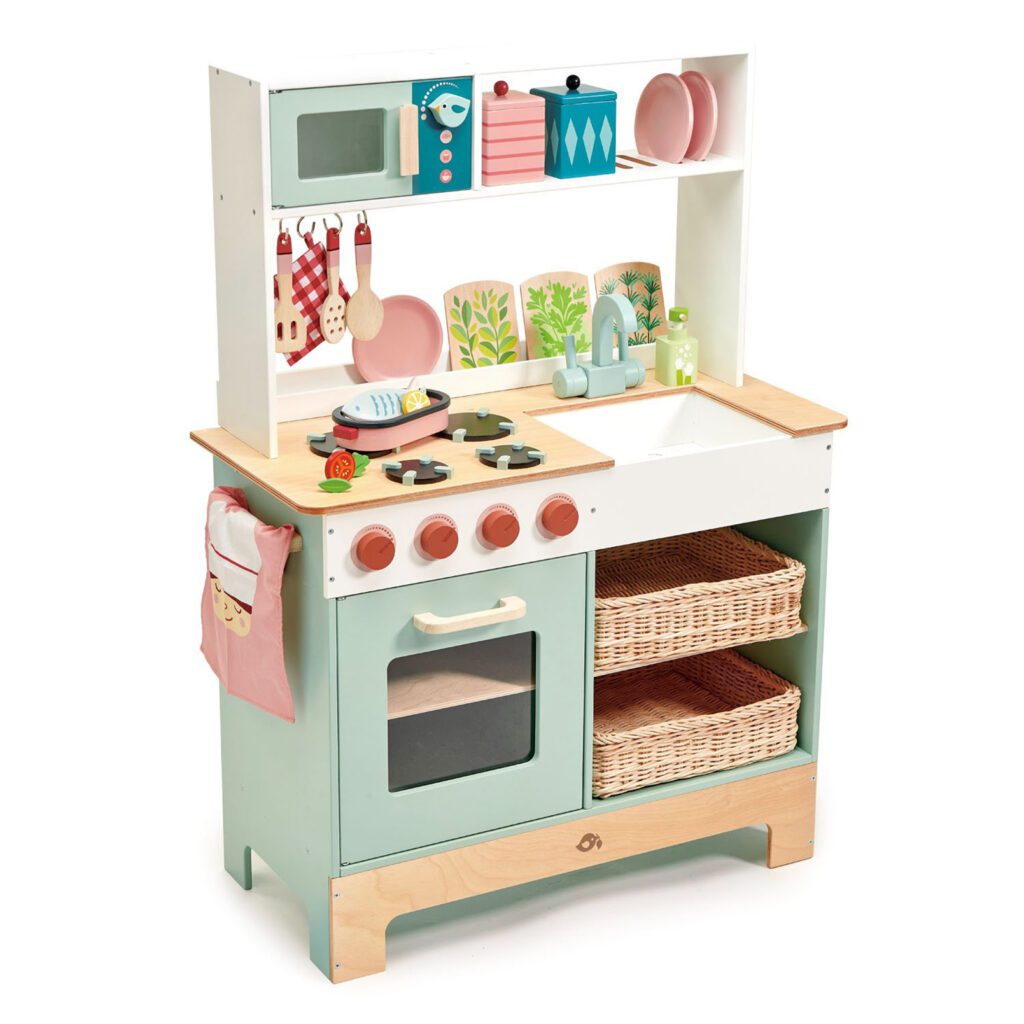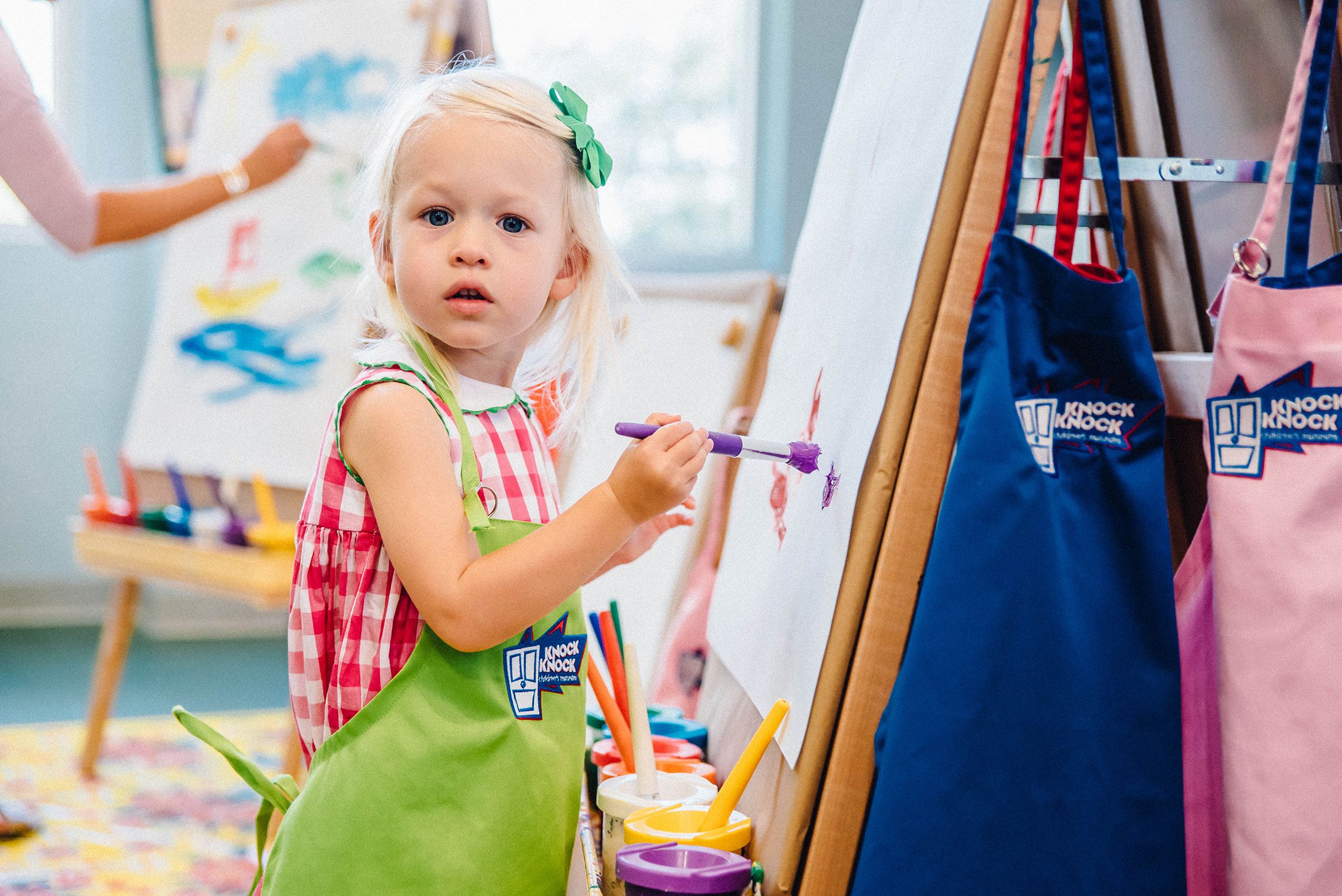
A Knock Knock Children’s Museum pro talks playroom must-haves
A version of this article originally appeared in the May 2021 issue of inRegister.
There’s a reason that cardboard boxes left behind by toys and home goods alike often find their way out of the trash and into the playroom. What they lack in batteries, lights or screens, they make up for in potential. With space to be colored, cut and completely transformed, the thick brown material can take the form of a car, house, spaceship or time machine—anything that a child can imagine. And it’s this transformative simplicity that Knock Knock Children’s Museum learning innovator and program coordinator Tammy Mulhearn aims to harness not only in the museum’s 18 learning zones, but at home in her children’s playroom.
“Toys that do a lot don’t leave space for creativity,” she explains. “If it talks and dances, it’s not giving kids the opportunity to make it their own.”
For her, a play space that fosters learning and growth is one that also puts the child in the driver’s seat. Toys that act as tools—blocks, books, art supplies—encourage exploratory and independent play that can take a child to the depths of their imaginations. And by putting them at arm’s reach without a background of clutter, kids can steer their learning in whichever direction they find most interesting and satisfying.
“It’s best to let children lead the way,” Mulhearn explains. “Take them somewhere like the museum and see what they respond to. That’s the best way to make sure you are filling your child’s space with items that will serve a purpose.”
Read on for Mulhearn’s must-haves for a playroom with potential:
Child-size table
Writing, drawing, painting and more are best done on a child’s level, rather than up at an adult-size dining room table. Not only does this allow all of the mess that comes with arts and crafts to be contained to a childproof space, but Mulhearn says opting for a low-to-the-floor option can help promote good posture—a trait that will be beneficial throughout school and work life.
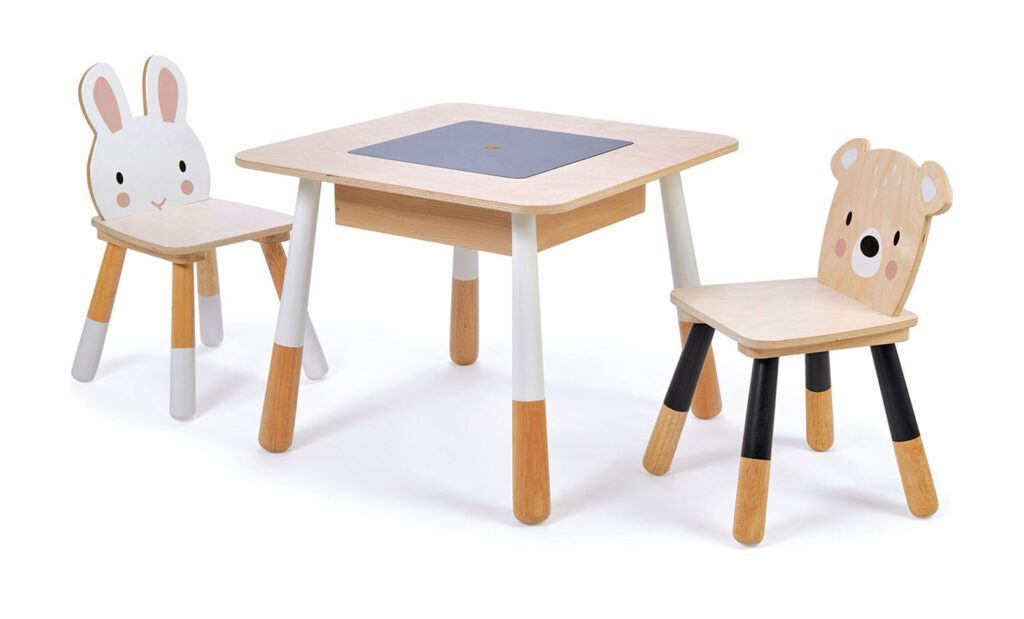
Low shelving
In order for children to be independent in their space, things need to be within reach. Mulhearn suggests opting for shelving that suits your child’s size, allowing them to easily grab and use their toys—and that includes crawling babies. On the shelf, ensure that each item has plenty of space to be seen. Every few months, cycle out some toys to give new perspective and keep kids excited and interested.
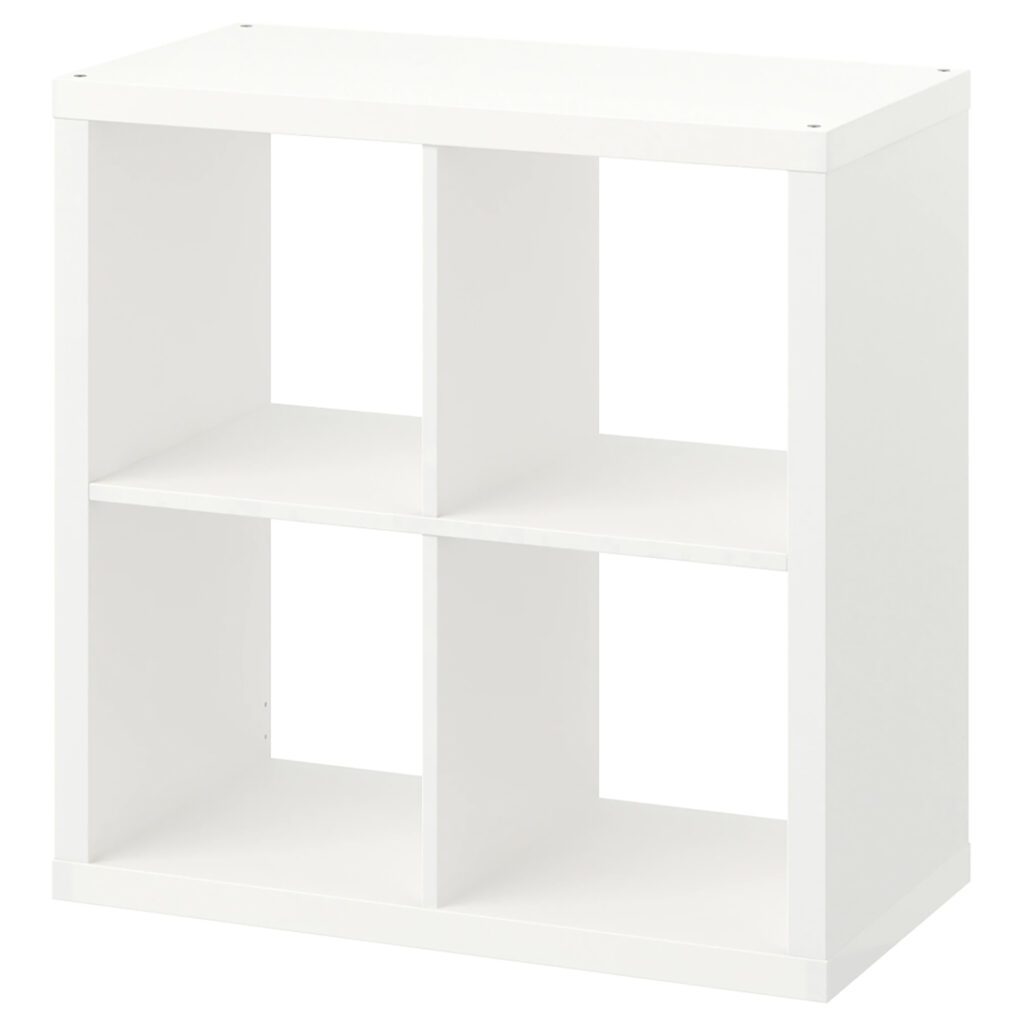
Display areas
“I don’t like to decorate, so I let my kids do it,” says Mulhearn with a laugh. But even if interior design is a passion of yours, she suggests taking a backseat and letting kids customize their own space. “I like using the book ledge shelves to let them display their art and other things they’re passionate about. It lets the space grow with them and their interests.”
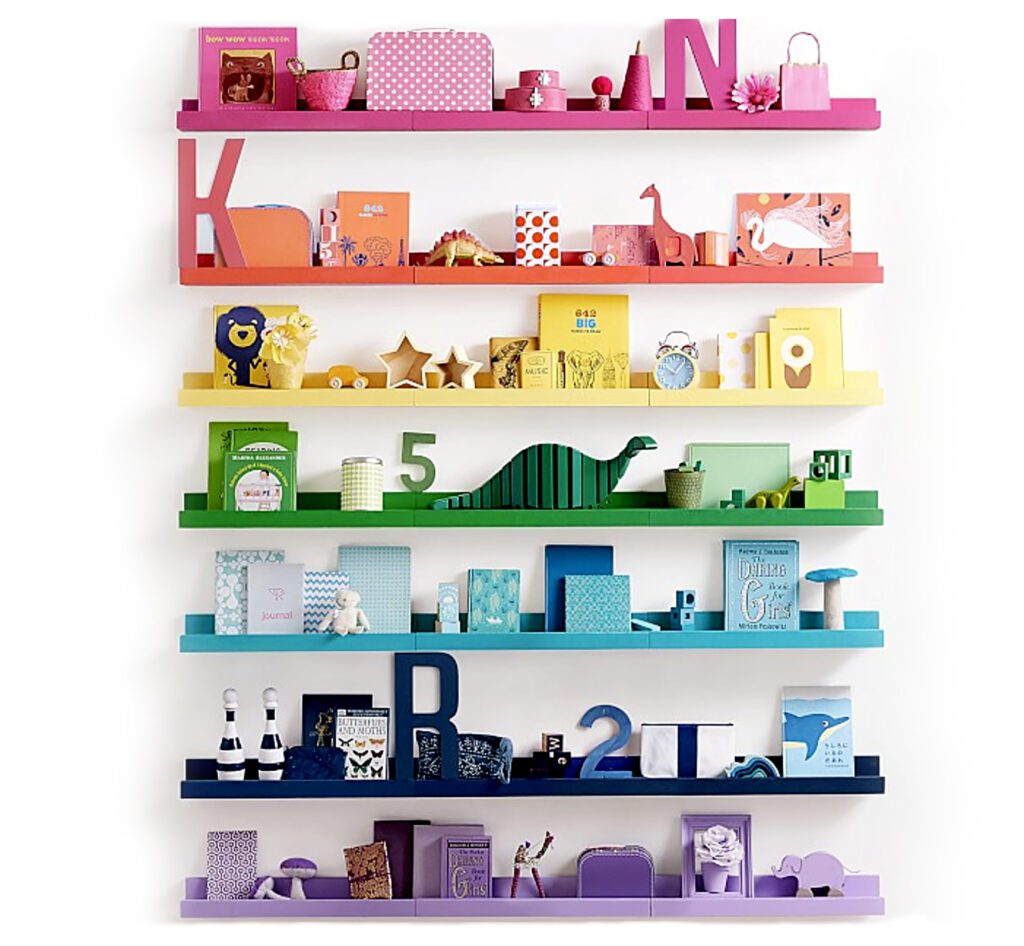
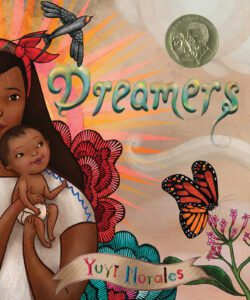
Books
“Books should be everywhere,” says Mulhearn, whose background as a librarian makes this recommendation all the more important. “In a print-rich and language-rich environment, kids absorb that these things are important. Plus, books can expose kids to a wide variety of cultures and experiences.” Books are a great way to introduce topics like diversity to children of all ages. And those board books you read to baby? “Let them eat their books,” she suggests. “It’s all part of their learning process.”
Here are a few of Mulhearn’s book recommendations for children:
A Birthday for Cow! by Jan Thomas
Press Here by Hervé Tullet
Dragons Love Tacos by Adam Rubin, Daniel Salmieri
Dreamers by Yuyi Morales
Grumpy Monkey by Suzanne Lang
I Am Every Good Thing by Derrick Barnes and Gordon C. James
Ish by Peter H. Reynolds
Jabari Tries by Gaia Cornwall
Julián Is a Mermaid by Jessica Love
Milo Imagines the World by Matt de la Peña, Christian Robinson
The Pigeon Needs a Bath by Mo Willems
Ten Little Rabbits by Virginia Grossman, Sylvia Long
They All Saw A Cat by Brendan Wenzel
Your Name Is a Song by Jamilah Thompkins-Bigelow
Wooden toys
No batteries, no problem. Blocks and other stacking toys give children the opportunity to learn valuable lessons about math, science and more, simply by coming up with new ways to play. In addition, toys made from high-quality wood, rather than plastic, stand the test of time and become pieces that can be passed on either to friends or future generations.
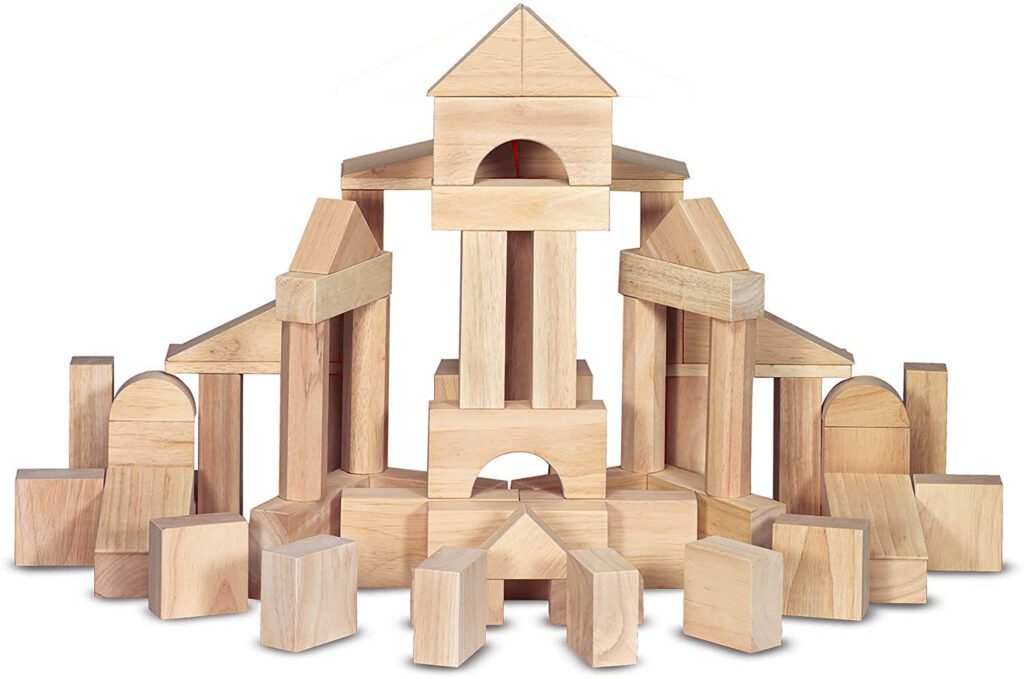
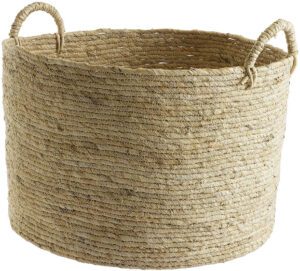
Baskets
Another way to get things down to kid level is with baskets on the floor. Mulhearn suggests organizing them not based on type of item but rather on how each individual child plays with the toys in the space. Let kids find their natural rhythm and customize the space to match. “This makes things function more easily for the kids and it makes cleanup easier later,” she explains.
Comfy rug and/or play mat
No one wants to play on the hard floor. Investing in a high-quality—and extra-cushioned—rug or play mat gives kids the ideal area to explore without the danger and discomfort of unforgiving flooring, from tummy time to fort-building.
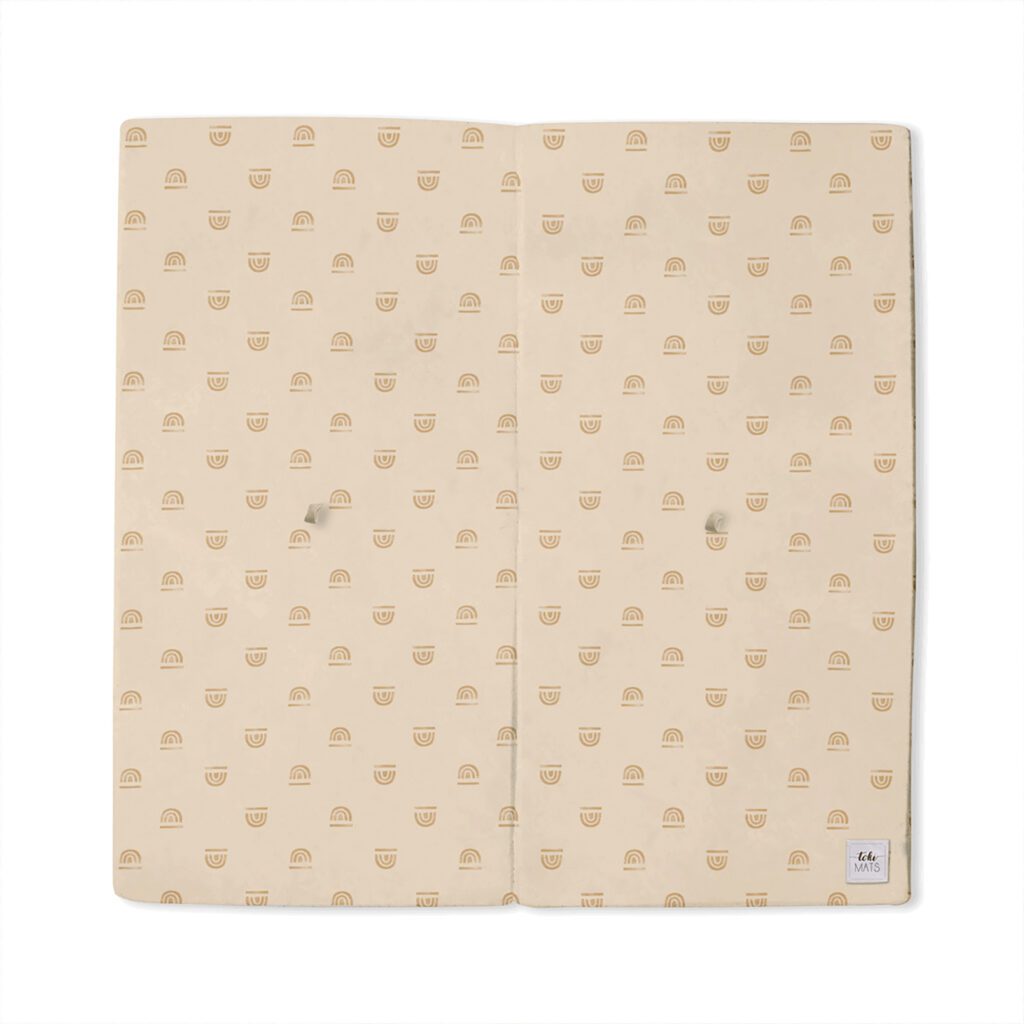
Tools for pretend play
According to Mulhearn, imaginative play in early childhood has less to do with the magical and mystical and more to do with the often mundane activities of everyday life. “It’s more of an extension of the real world,” she explains. “They’re acting out things they’ve learned and experienced through pretend play.” This means activities like cooking, cleaning and even checking out people in a grocery store. One of Mulhearn’s favorite things in her own children’s playroom is a wooden play kitchen. However, she says toys for pretend play—from fake food to spoons and cups—can be found almost anywhere.
